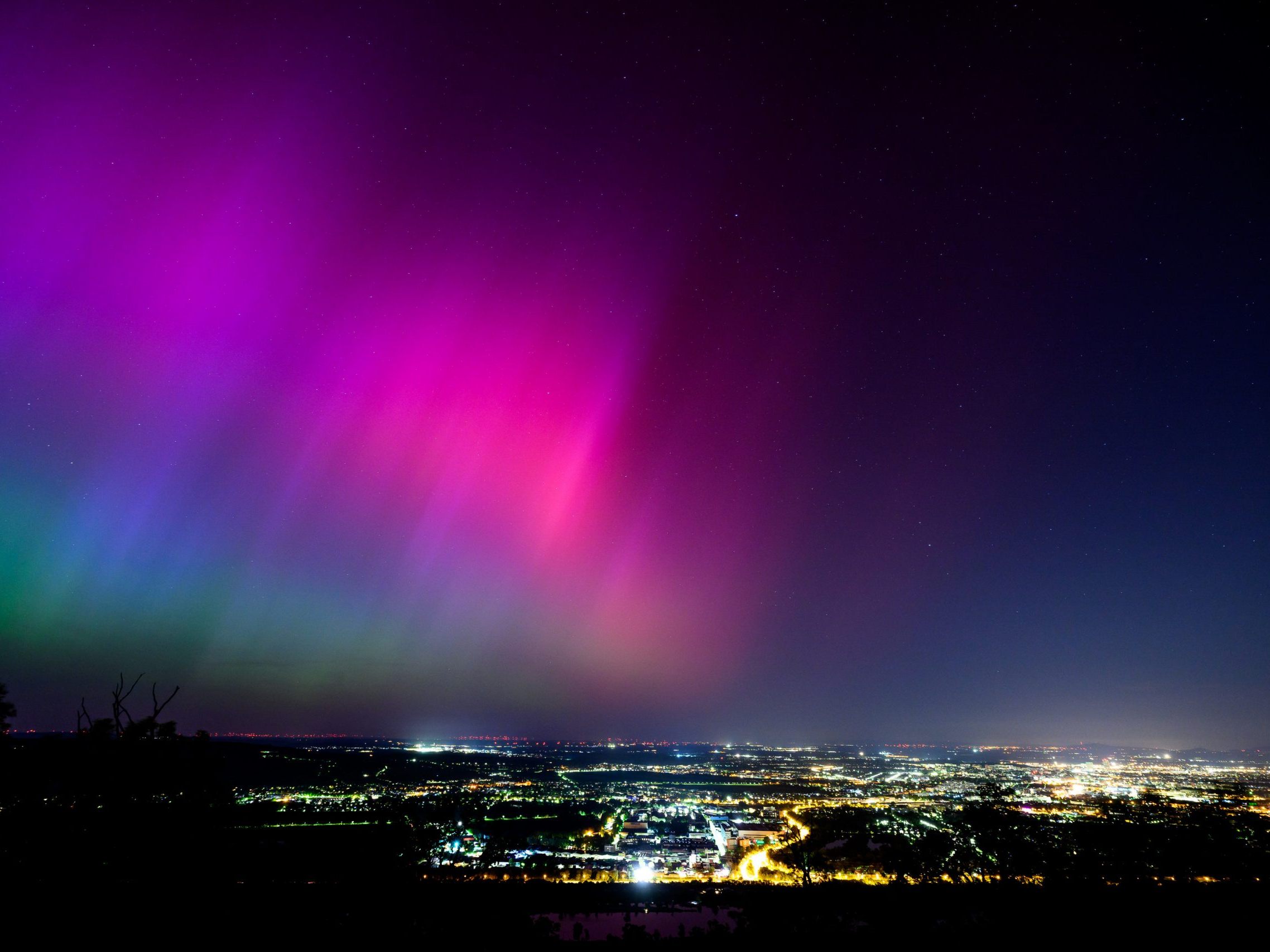Even in 2025, You Will Be Able to See Northern Lights in Austria Again

After some spectacular Northern Lights that were visible in Austria in the outgoing year, the chances are also good in 2025 to observe Northern Lights in this country. The reason for this is the ongoing high solar activity, as explained by Christian Möstl, head of the Austrian Space Weather Office of GeoSphere Austria in Graz, to the APA. He expects three to five strong solar storms next year, which have the potential for Northern Lights in Austria.
Record Levels of Solar Activity Measured
Solar activity has been measured since the 18th century, based on the number of sunspots and sunspot groups, from which the so-called "sunspot relative number" is calculated. Approximately every eleven years, this reaches a maximum, in 2024/25 our central star is at the maximum of solar cycle No. 25.
Two records show how strong the solar activity currently is: With 290 sunspots, there was the highest daily value in 20 years on July 18, in August there was the highest monthly sunspot number of the past two decades with an average of 215. "It is definitely to be expected that the sun should be at the same activity level in 2025," emphasized Möstl.
"The number of sunspots is also strongly related to the number of solar storms that hit the Earth. Because most of these events originate in these magnetically active regions of the sun," said the expert. During such eruptions, the sun hurls energy-rich particles and magnetic fields into space. At the current maximum of solar activity, there are about four solar storms per day that go in all directions of interplanetary space.
Earth Hit by About 50 Solar Storms in 2024
The Earth was hit by about 50 solar storms in the outgoing year - the highest number of the past two decades. "From our experience, about ten percent of them have the potential for Northern Lights in more southern latitudes, such as in Austria," said Möstl. In fact, four strong geomagnetic storms were registered in 2024.
Such solar storms can not only disrupt GPS signals, power grids, satellites or other technologies. The high-energy particles can also cause atoms in the Earth's atmosphere to glow, thus creating the Northern Lights.
Spectacular Northern Lights to be Observed in May
On the night of May 11, the strongest solar storm since 2003 produced spectacular Northern Lights in Austria, which were even visible in the brightly lit city of Vienna. "This was certainly the best Northern Lights event that has ever been photographed, especially thanks to the many smartphones, which capture the colours better than we can see with the naked eye," says Möstl. Also, on the night of October 11, the luminous phenomena in the atmosphere caused by a strong solar storm were visible in our country, weather permitting, especially in Western Austria.
In order for us to actually observe Northern Lights at our latitudes, other factors play a role in addition to solar activity. Of course, the weather, especially the cloud cover, must be right, and the moon must not shine too brightly. The season and the arrival time of the solar storm are also important factors - it should not be too light for too long and people should still be awake when the phenomenon occurs.
Few Problems with Technical Infrastructure Due to Solar Storms
Although the solar storms in 2024 were very strong, they caused only a few problems with the technical infrastructure. According to Möstl, there were some disturbances in satellite navigation signals, such as in agricultural machines on large fields in the USA or in GPS-controlled drones in Austria. Additional currents were also measured in the domestic power grid during the strong solar storms, but these did not cause any problems, according to the expert.
For the years after 2025, Möstl expects fewer solar storms. However, these would tend to cause somewhat stronger effects in the declining phase of the solar cycle when they sweep over the Earth's magnetic field. "So there are even chances until 2027 to see the sky dance in Central Europe."
New Probes for Early Prediction of Solar Storms
Science is very interested in being able to predict such solar storms as early as possible and to understand their structure. Möstl refers to several space missions dedicated to this topic. For example, the NASA probe "Stereo-A", launched in 2006, was in a good position in May to measure the magnetic field of the strong storm a few hours before it hit the Earth. The "Solar Orbiter" probe of the European Space Agency ESA also analysed a solar storm in March, long before it reached the Earth.
In February 2025, the US space agency NASA will launch the "Punch" mission, consisting of four small satellites, to observe the solar wind and better understand how solar storms spread to Earth. The ESA is planning the "VIGIL" mission for 2031 for continuous solar observation to detect potentially dangerous solar activities early on.
(APA/Red)
This article has been automatically translated, read the original article here.





